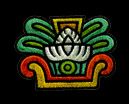Aztec and Maya Calendar
In the tonalpohualli, the sacred Aztec calendar, Thursday March 11, 1999 is:
Xihuitl:
solar year


13 - Acatl (reed)
Xiuhpohualli:
365-day calendar
13 - Tecuilhuitontli (VII)
Long Count:
Mayan calendar
12.19.6.0.6
(Correlation: Alfonso Caso - Nicholson's veintena alignment [adjust])
The significance of this day
Day Miquiztli (Death, known as Cimi in Maya) is governed by Tecciztecatl, the Moon God, as its provider of tonalli (Shadow Soul) life energy. It is a good day for reflecting on your priorities in life, a bad day for ignoring possibilities. It is a day of transformation, signifying that briefest moment between old endings and new beginnings.
The thirteen day period (trecena) that starts with day 1-Miquiztli (Death) is ruled by Tonatiuh. This trecena signifies the vast cosmological forces at play in the lives of human beings. These 13 days are all influenced by transformative powers of unknown dimension, origin and intent. The days of this trecena often pass by unnoticed since they are not remarkable until the elementals turn their attention to this place, the first of the thirteen skies; when this occurs, though, the whole of the world changes. It is during these days that the song of the Old Ones may best be heard. These are good days to fulfill old obligations; bad days to go back on one's word.
Aztec facts
Tenochtitlan, the Aztec capital was captured by Hernán Cortés on August 13, 1521 (day 1-Coatl). This date, as recorded by Fray Bernardino de Sahagún, provides an anchor for the correlation of the calendar.

